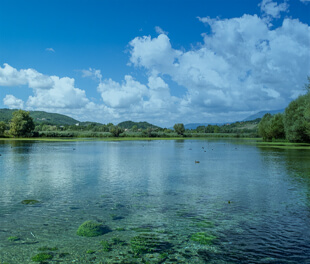
Acea for World Energy Saving Day
Acea Ato 5, in line with ARERA’s provisions, applies the tariff structure to users in compliance with the Integrated Text on Water Services Fees (TICSI) established by the Authority with resolution no. 665/2017/R/idr.



The Regulatory Authority for Energy, Networks and Environment (ARERA) has introduced, with Annex A (Integrated Text on Water Services Fees) of Resolution 665/2017/R/idr, approved on 28 September 2017, the new criteria for the definition of the tariff structure applied to civil users of the Integrated Water Service (SII), who take water from the aqueduct and discharge it into the public sewer, and to industrial users authorised to discharge into the public sewer. The goal of the new regulation is the reorganisation of the fees applied to users, through the rationalisation of the types of use (and related sub-types), both domestic and non-domestic ones, and of the tariffs for the collection and purification of industrial waste authorised for discharge in the public sewer system, as well as to standardise the tariff structures applied at national level.
La suddetta articolazione tariffaria prevede le seguenti tipologie d’uso:
a) domestic use (within which the following sub-types can be identified: resident domestic use, condominium use, non-resident domestic use, further sub-types up to a maximum of two).
b) industrial use;
c) use for crafts and commerce;
d) use for agriculture and livestock;
e) public use that cannot be interrupted;
f) public use that can be interrupted;
g) other uses (including types of non-domestic utilities which cannot be included in the categories indicated in the previous point a).
In cases of residential utilities for domestic use, the element underlying the calculation of the expenditure is represented by the family unit, in particular by the number of individuals that compose it. The cost of the service (consisting of fixed rates and a variable rate) is formulated according to the number of residents making up the family unit, in line with the declaration made by the customer. This rule makes it possible to align the overall calculation of expenditure with the actual needs of the specific family unit.
Fees for residential domestic utilities are broken down according to the following general structure:
The range of subsidised annual consumption recognised to each individual residential domestic utility will vary according to the number of family members (NCF), using the formula NCF (number of family members) x 18.25 cubic metres/year.
In fact, the user just needs to register in the MyAcea Acqua customer area and proceed with the association of the utility with his/her digital profile. This association is possible in the "Utilities Management Tools" section: here, the user can simply go to the "Contracts" section and choose "Contract data change", and a guided procedure will then allow to enter the number of members of the relative family unit.
Moreover, it is possible to receive any information on MyAcea Acqua and get assistance for the registration procedure by contacting us via the chat service on our website, available from Monday to Friday from 8:00 AM to 5:00 PM.
As required by national legislation, in the event of non-communication of the composition of the family unit, we will consider the latter to be made up of three people.
The tariff allows for economic savings in the case of large and single-member families, as the total expenditure is adjusted to the actual needs of the reference family unit.
Click here to go to the page dedicated to our Tariffs.
In all cases of condominium utilities without commercial outlets, the tariff applied is the domestic/condominium one, with consumption brackets regulated in relation to the number of apartments.
Any utility other than those for domestic use is included in specific categories of use, which are shown below:
The "Use for crafts and commerce" category benefits from differentiated tariffs according to the concessions granted.
Billing can take place on the basis of 'actual consumption', understood as the difference between two meter readings or — in the absence of readings or self-readings — it can take place using an estimate, i.e. a projection based on previous consumption.
Based on the CIP (Inter-ministerial Price Committee) provision no. 24/88 published in the Official Journal no. 292 of 14 September 1988, the Manager applies the pro-rata-die criterion, i.e. the allocation of volumes on a daily basis, conventionally considering a constant consumption over the given period.
The pro-rata-die method consists in considering any consumption recorded over a period of time as if it had been produced in a constant way day after day, thus guaranteeing the correct application of the prices in force even in the event of any tariff changes occurred in conjunction with the billings.
For the calculation, the tariff of the period to which the consumption refers is considered. Obviously, the tariffs and the relative consumption brackets, approved by the Territorial Authority, refer to the whole year. The brackets are then considered on a daily basis, dividing each yearly bracket by 365 (conventional days of a year). The number of days between one reading and the other is calculated and then multiplied by the day-based brackets, thus obtaining the width of the brackets relating to the period of consumption being billed; the consumption is then calculated from the difference between one reading and the other, and it is attributed to each bracket up to its possible saturation, starting from the first; finally, the consumption per bracket is multiplied by the corresponding tariff.
Estimated consumption is given by the average annual consumption divided by 365 days, and multiplied by the number of days for which it is necessary to estimate consumption.
In the first bill issued following the actual reading of the meter, the adjustment is made by debiting the consumption for the period starting from the previous actual reading, with the concurrent deduction of the amounts previously invoiced as an advance.
For the regularisation of the contractual position of non-registered utilities, the Manager will account for the recovery of previous turnover on the basis of the average annual consumption of the type of utility, starting from the date of possession of a suitable title on the property and, in any case, not beyond 5 years.
Discover the latest news and initiatives of the Acea Group

Acea for World Energy Saving Day

Visit the virtual museum about the history of the Acea Group

The channel for the commercial requests on land urbanisation

Acea turns the spotlight on the Rome Film Festival 2023

Acea is in the "Gold class" in the .trust research

Read more about our culture of inclusiveness